Types of Magnesia Refractory Brick
Articles
Types of Magnesia Brick
Magnesia brick refractories include four families of compositions and have dead-burned magnesite (MgO) as their starting component. Evaluate Resco's recommended magnesia products. Burned magnesite and magnesite-carbon brick feature very high magnesia contents. Magnesite-chrome and magnesite-spinel brick are blends of dead-burned magnesite with chrome ore and magnesia-alumina spinel, respectively.
Dead-burned magnesite is sintered in a rotary or vertical shaft kiln. Fused Magnesia is normally manufactured in an electric arc furnace by melting at 5000°F. This process alters the crystalline structure of the magnesite to improve upon performance. Fused magnesia outperforms dead burned magnesia in corrosion and abrasion resistance, strength and chemical stability.
Magnesia-Carbon Brick:
Magnesia-Carbon bricks are un-fired refractory products. Mag-carbon products are designed with improved corrosion and slag resistance through the addition of graphite.
When a magnesia-carbon brick is bonded with an organic resin, it is also known as resin-bonded magnesia-carbon brick. Mag-carbon bricks are used in basic oxygen converters, electric furnaces, and steel ladles. Resco Products also manufactures Mag-Carbon TI Brick (Tar Impregnated).
Magnesite Burned Brick:
In basic steel production, magnesite burned brick products are preferred. Their high melting temperatures and the ability to resist iron oxide make them ideal. High magnesite bricks can have their slag resistance enhanced by tar-impregnation. View Magnesite Burned Brick TI (tar-impregnated)
High-Fired Magnesite-Chrome Brick:
Dead-burned magnesite has been blended with chrome ore for many decades. The slag's resistance of the brick is needed to withstand siliceous melts. The siliceous melts come from the gangue portion of a metallurgical ore. Magnesite-chrome compositions include high-fired magnesite-chrome brick and re-bonded fused magnesia-chrome brick. Applications for magnesite-chrome refractories include steel AOD vessels, copper and precious metals refining furnaces, lead smelting furnaces, and the regenerators of glass tanks.
Fused Grain Magnesia-Chrome Brick:
Where greater wear resistance is needed, high-fired magnesia-chrome brick, re-bonded fused magnesia-chrome grain brick can be used. These products are composed of a synthetic grain made by melting magnesia and chrome ore in an electric furnace. Then milling the cooled fused ingot into brickmaking sizes. The fused grain is sized into fractions, pressed into bricks, and fired at a high temperature.
Re-bonded fused magnesia-chrome brick exhibit lower porosity and enhanced slag resistance. Typical applications for re-bonded fused grain brick are AOD vessels, copper smelters, lead furnaces, and other non-ferrous refining furnaces and vessels.
Magnesia Alumina Spinel Brick:
Spinel bricks are an abbreviated term for magnesite-alumina spinel bricks. These burned compositions are today’s preferred brick linings for rotary cement and lime kilns. They feature excellent thermal spalling resistance.
Consult your Resco sales representative or industry specialist to optimize basic brick selection for your application.

